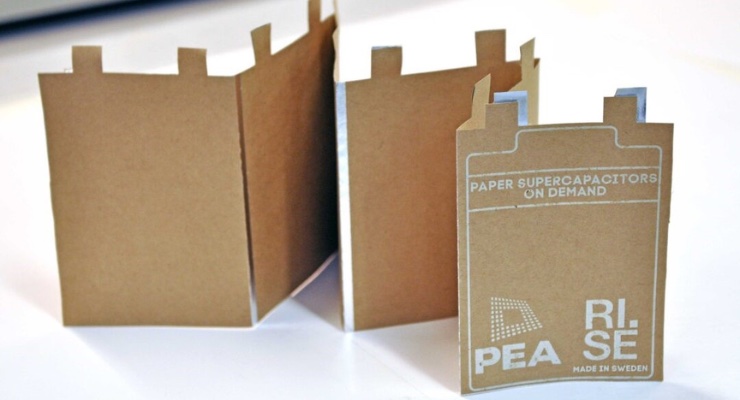Sweden’s digital cellulose center develops paper supercapacitors
The Digital Cellulose Center (DCC)a competence center coordinated by RISE research institute in Sweden, have already developed prototypes. The competence center is run by RISE, Linköping University and Royal Institute of Technology, and has 14 industrial partners. DCC works on many projects, including sensors, biomedical equipment and energy harvesting. It has also formed spin-outs, i.a Cellfionwhich produces cellulosic battery membranes.
Dr. Jesper Edberg, scientific leader at the Digital Cellulose Center and researcher at the RISE Research Institutes of Sweden, spoke about these paper supercapacitors, which use cellulose harvested from Sweden’s abundant forests.
– The aim here is to make sustainable electronics by using materials from forests, of which we have a lot in Sweden, says Dr. Edberg. “We are looking at how we can use our resources and move away from plastic, so why not make electronics from natural materials? There have been several initiatives – we teamed up with companies in the forestry and industrial sectors and with funding we started this competence centre.”
The supercapacitors are a mixture of cellulose and electroactive materials that can be formed in a machine that can produce paper. The papers are coated with aluminum, which acts as the unit’s current collector as well as a moisture and oxygen barrier. The paper is produced by papermaking equipment and the circuits are then screen printed.
“By mixing cellulose and electroactive particles, we obtained something similar to paper,” reported Dr. Edberg. “We saw that it had some amazing properties, and today we’ve reached an actual paper that we can make in a paper machine. It’s a thin flexible substrate that can be run through a roll-to-roll process.
“In parallel, we worked on the printed supercapacitors – it’s a mixture of electronic particles and cellulose,” he added. “These capacitors are made of paper, and each layer of the stack has some bio-based materials, even carbon from coconuts. The future goal is to use the paper manufacturing process to make the electrodes, and we can make them thin and flexible.”
Dr. Edberg noted that they see capacitance and that it is more or less equal to commercial supercapacitors.
“Our supercapacitors store electrical energy,” said Dr. Edberg. “A supercapacitor can’t store as much energy, but it releases it much faster than a battery. It can be used for a million cycles, and our supercapacitor is renewable and carbon neutral.
“When you use paper, it’s not as stable as plastic, but plastic doesn’t break down if it ends up in landfills,” he noted. “For wearables or a sensor on the body, you would want it to be energy autonomous, and we have many ways to harvest energy from the environment, including light and body heat.”
There are many applications that can use these supercapacitors.
“We could use these supercapacitors for sustainable buildings to store solar energy,” noted Dr. Edberg. “You can store energy in these supercapacitors, which can be placed in the walls. We could also think about IoT devices – we can make them very big or very small – and wearable electronics, however, need a power source. There can also be short-term uses. “
There are challenges that must be overcome.
“One of the challenges is that they like to absorb water and it starts to mold, but there are many ways to counteract that,” says Dr. Edberg. “We can make it hydrophobic and flame retardant. There are also other things we need to improve – its lifespan and how long it will last. This is something we are looking at. We also need to do stress tests to simulate aging.”
The next step is to take the prototype to market.
“We have working prototypes, but since we are a research institute, we now need a company to take on this project,” says Dr. Edberg. “We would like to start a pilot project with a construction company. We have 14 industrial partners in DCC. The other ways are for an outside company to license this technology, or even create a spinout.”




